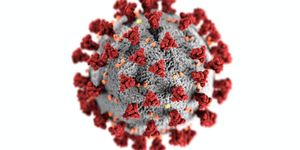Improving 3D Object Detection in Self-Driving Cars
A team of researchers at Ritsumeikan University have designed a new network system that could help pave the way for more efficiency and accuracy among self-driving, autonomous cars. The team’s new system is described in a recent article published in IEEE Internet of Things Journal.
Self-driving cars, once thought to be a mystical idea of a far distant future, are attracting more and more attention by developers and consumers as something that may be a widespread possibility sooner than we think. Already, manufacturers like Tesla are already producing vehicles that have a self-driving, autopilot feature that allows the vehicle to navigate roads without the need for human assistance. But as you can imagine, self-driving cars are far away from perfection. A roll out of self-driving taxi cars in San Francisco, for example, led to an accident between a self-driving car and a firetruck, causing the company Cruise to cut the number of cars on the road by half. While this is just one example of the challenges self-driving cars face, it highlights that there is a lot of work to be done, particularly when it comes to helping self-driving cars receive the input they need to avoid accidents. Researchers at Ritsumeikan University hope they’ve developed an adequate solution.
Specifically, the ability to detect 3D objects is a key part of autonomous car functioning. Many existing self-driving cars leverage an LiDAR sensor system, which uses various sensors to create an almost 3D map of the car’s surroundings. However, LiDAR is very sensitive and can be disrupted by even regular background noise from something like falling rain. Some have proposed combining 2D RBG images with 3D object maps, but this can still have limitations, such as difficulties detecting small objects. The solution is a network called the Dynamic Point-Pixel Feature Alignment Network (DPPFA), which leverages three distinct modules:
· Memory-based Point-Pixel Fusion (MPPF) module
· Deformable Point-Pixel Fusion (DPPF) module
· Semantic Alignment Evaluator (SAE) module
Part of this combined approach enables the system to leverage 2D data as a type of memory set, improving how the network learns and how it functions in a 3D setting when faced with disruptive noise. The DPPFA system saw a roughly 7% increase in precision compared to existing object-detection methods, even when used with different noise conditions known to disrupt LiDAR.
Sources: Science Daily; Forbes; IEEE Internet of Things Journal








